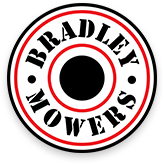Anyone who has ever cut a lawn runs into a specific problem or two. Sure, it's easy to mow your way through straight patches of land. However, things get a lot more difficult when you need to maneuver around corners, trees, and bushes.
The sulky is an ideal add-on for walk-behind mowers, making it much easier to handle the most robust areas with no real strain. This ease of use reduces the amount of time it takes to cut a large lawn. For people with large yards, this can be a real blessing.
Get the Most From Your Walk-Behind Mower
Walk-behind mowers remain popular because of their cost and functionality. They work well unless you're dealing with a vast lawn. For the typical yard, these mowers do a sufficient job with most people's common complaints being about reaching out-of-the-way areas. Adding a sulky is a fast way to mitigate those issues.
Don't Let Trees Stand in the Way of the Perfect Lawn
Tree branches are not a problem for a lawn care specialist with a sulky and a walk-behind mower. The design empowers the operator to work around trees efficiently without any extra fuss. That's one reason this setup is popular with commercial lawn care specialists. They need to get the most out of their time and effort, and this configuration helps them do that.
Dealing With Slopes Has Never Been Easier
Sloped lawns tire out anyone, especially with traditional mowers. Even riding mowers are an issue because they struggle to handle hills properly. It's a cumbersome process, which adds more overall negativity to the experience.
Slopes can pose a massive problem for lawn care specialists. Managing these areas is tough to do unless you have a walk-behind mower with a sulky. With that equipment in place, the task becomes a joy.
Handle Long Jobs the Right Way
From a stamina standpoint, the sulky is also a winner. Now you can mow for a more extended time and hit more of the yard while experiencing less fatigue. That's a big deal whether you're mowing lawns or you’re in the business of doing the work for others.
The key is the comfort that the sulky provides. The more natural movement allows people to work for hours without muscle soreness. Not only that, but the unit also damages turf less than alternatives. Most people who operate sit-down mowers for a full day find they have a lot of soreness. With the walk-behind option, they're kept more limber by standing on the sulky.
There are numerous reasons that this setup is ideal for people who have to perform this work all the time. It's up to the operators to decide which route they wish to take, and a sulky is an excellent choice for most. Lawn care is crucial work, and it's always a great idea to make it easier. That way, there's less soreness, and the overall experience is much more enjoyable.
